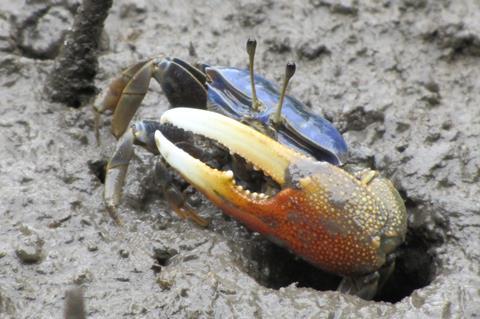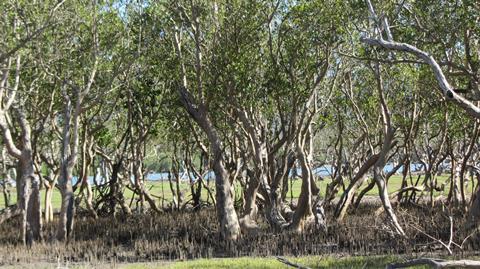Engineering disturbance in mangrove sediments could help to conserve these habitats by boosting their microbiome, a new study suggests.

Scientists are increasingly turning to mangroves in search of novel biological compounds and are investigating the selective forces that could enrich the microbiome.
The review by a team at KAUST, ‘The microbial landscape in bioturbated mangrove sediment: a resource for promoting nature-based solutions for mangroves’, appears in Microbial Biotechnology, an Applied Microbiology International publication.
Mangrove microbiome
The study of the mangrove microbiome has recently gained a lot of momentum because it is still relatively unexplored, with several new bacterial strains described, and it is a source of bacterial enzymes that can be used for various applications from biomedicine to conservation science, explained corresponding author Dr Marco Fusi.
“Many factors shape the microbial communities in mangroves like salinity, oxygen, tidal regime, temperature, among others,” he said.
“However, one selective force that broadly controls and enriches the bacterial community is bioturbation, which is the process of physical and chemical change determined by the activities of animals and plants, like burrowing, rooting, and grazing.
“Here we collected different types of evidence to show how bioturbation can dramatically change the microbial landscape by creating environmental heterogeneity where bacterial species can diversify.”
Disturbing the sediment
The study reviewed the effect of bioturbation on the sediment microbial community, Dr Fusi said.
“Generally, mangrove sediment is strongly anoxic, with physico-chemical characteristics that strongly favour anaerobic metabolism, such as the production of sulphur and methane. Bioturbation by animals and plants changes this condition by allowing oxygen to penetrate into the deep sediment.

“We provided evidence that by creating such heterogeneity, bioturbation creates a so-called ‘halo effect’ that boosts different metabolic pathways that can even have a positive feedback on the plant by favouring nutrient trapping and recycling.”
Increasingly, microbial technology is deployed to facilitate restoration and conservation programmes, often using inoculants of probiotic bacteria to support plants and corals.
Conserving microbial diversity
“In this contribution, we advocate that bioturbation in coastal habitats can be key for enriching and conserving high microbial functionality and diversity, contributing to protect such ecosystems. We highlight the importance of conserving a bioturbating flora and fauna to preserve ecosystem functionality and resilience,” Dr Fusi said.
“In the future, exploration of the consequences of bioturbation on the mangrove microbiome should continue in order to unveil new microbes, functions and, therefore, solutions that can be useful to fight the present environmental challenges posed by anthropogenic pollution and climate change.”
The study was led by Dr Jenny Marie Booth within the work on mangrove bioturbation carried by Extreme System Microbiology Lab at KAUST directed by Prof Daniele Daffonchio.
‘The microbial landscape in bioturbated mangrove sediment: a resource for promoting nature-based solutions for mangroves’, appears in Microbial Biotechnology, an Applied Microbiology International publication.







No comments yet